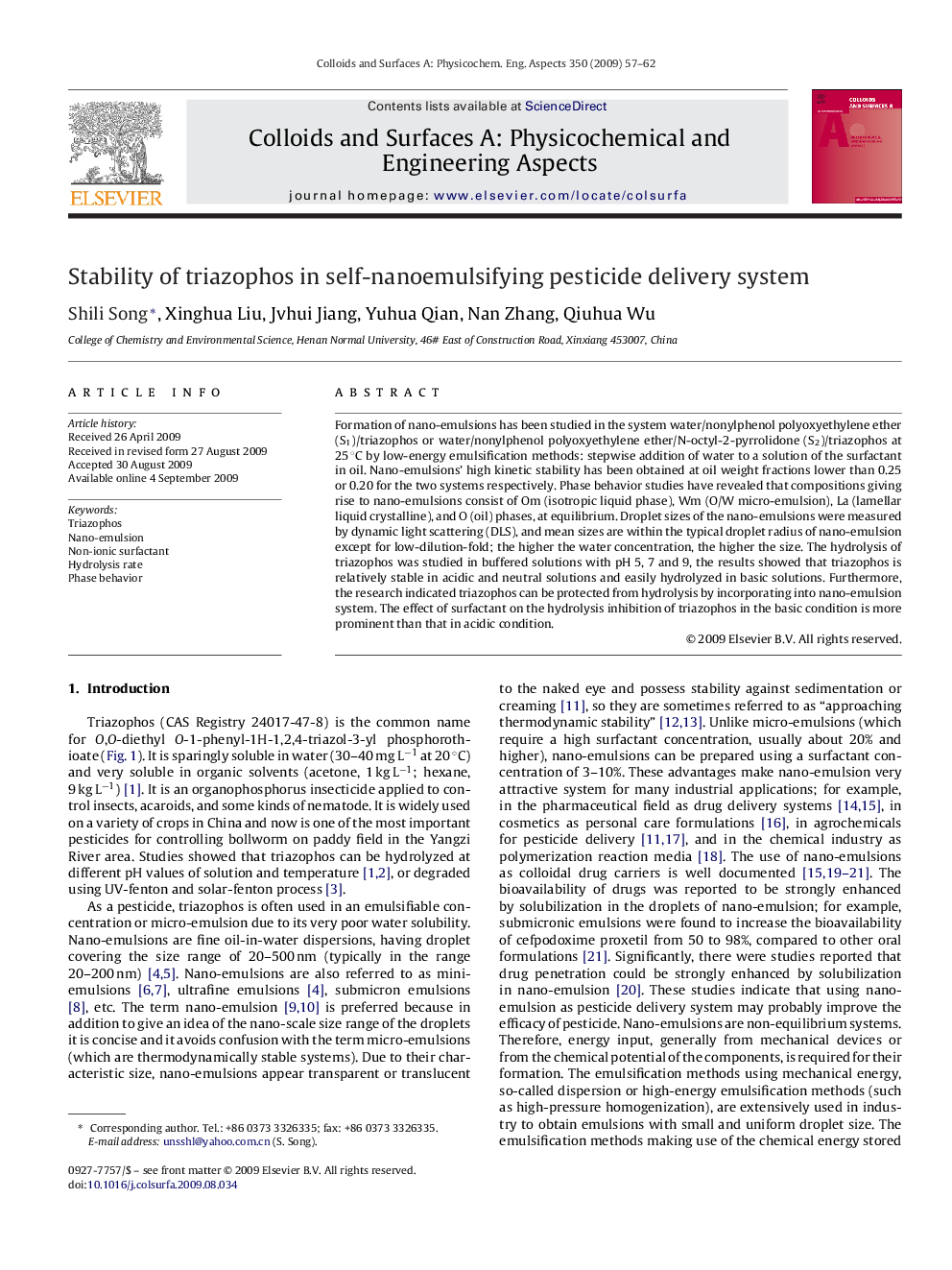| Article ID | Journal | Published Year | Pages | File Type |
|---|---|---|---|---|
| 595463 | Colloids and Surfaces A: Physicochemical and Engineering Aspects | 2009 | 6 Pages |
Abstract
Formation of nano-emulsions has been studied in the system water/nonylphenol polyoxyethylene ether (S1)/triazophos or water/nonylphenol polyoxyethylene ether/N-octyl-2-pyrrolidone (S2)/triazophos at 25 °C by low-energy emulsification methods: stepwise addition of water to a solution of the surfactant in oil. Nano-emulsions' high kinetic stability has been obtained at oil weight fractions lower than 0.25 or 0.20 for the two systems respectively. Phase behavior studies have revealed that compositions giving rise to nano-emulsions consist of Om (isotropic liquid phase), Wm (O/W micro-emulsion), La (lamellar liquid crystalline), and O (oil) phases, at equilibrium. Droplet sizes of the nano-emulsions were measured by dynamic light scattering (DLS), and mean sizes are within the typical droplet radius of nano-emulsion except for low-dilution-fold; the higher the water concentration, the higher the size. The hydrolysis of triazophos was studied in buffered solutions with pH 5, 7 and 9, the results showed that triazophos is relatively stable in acidic and neutral solutions and easily hydrolyzed in basic solutions. Furthermore, the research indicated triazophos can be protected from hydrolysis by incorporating into nano-emulsion system. The effect of surfactant on the hydrolysis inhibition of triazophos in the basic condition is more prominent than that in acidic condition.
Related Topics
Physical Sciences and Engineering
Chemical Engineering
Colloid and Surface Chemistry
Authors
Shili Song, Xinghua Liu, Jvhui Jiang, Yuhua Qian, Nan Zhang, Qiuhua Wu,
